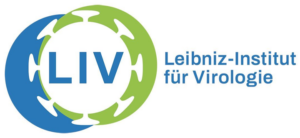
P05 - Adam Grundhoff /
Abel Viejo-Borbolla
Herpesvirus Chromatin Programming during De Novo Infection
- Herpesvirus latency establishment
- Kaposi sarcoma-associated herpesvirus
- Varicella zoster virus
- Comparative epigenetics
- Viral chromatin regulation by polycomb repressor complexes and PML nuclear bodies

Nuclear entry of a non-chromatinized DNA molecule is a central event in all herpesvirus infections. Following nuclear delivery, epigenetically naïve episomes can either activate the lytic gene expression cascade, leading to production of viral progeny and host cell death, or acquire latent chromatin states that mediate selective and reversible silencing of lytic genes. Whereas latent chromatin allows the viral genome to persist in a dormant state until a reactivation signal is received, antiviral host defences promote constitutively repressive chromatin states to globally suppress invading DNA. If the virus fails to escape or manipulate these defences, viral episomes are permanently silenced or cleared. To date, the chromatin factors and epigenetic pathways governing successful establishment of latent chromatin are only partially understood. Given their evolutionary relationship, we hypothesize that as of yet undiscovered and fundamental principles are shared among different herpesviruses. To address this hypothesis, we will perform a comparative analysis of two human herpesviruses: The gammaherpesvirus Kaposi sarcoma-associated herpesvirus (KSHV) and the alphaherpesvirus varicella zoster virus (VZV). Based on our previous observations, we hypothesize that both viruses exploit default host pathways that have evolved to rapidly recruit polycomb repressive complexes (PRC) to CpG-rich DNA. Instead of constitutive heterochromatinization that may be imposed by PML nuclear bodies (PML-NBs), PRC recruitment allows viral episomes to acquire facultative heterochromatin states to establish and maintain latency. We therefore postulate PRC-mediated suppression to be a common denominator of latency, but also expect that initial assembly as well as maturation of viral chromatin proceed in a spatially and/or temporally distinct fashion for each virus. While this project aims to decipher the mechanisms that govern latent chromatin of KSHV and VZV chromatin, our long-term goal is to extend our findings to other viruses and develop a unified model of early chromatin regulation in DNA virus infection.
To reach our objectives, we will employ a variety of tools in appropriate latency and reactivation models, including epigenome (ChIP-Seq, MeDIP-Seq) and transcriptome (RNA-Seq) interrogation techniques, manipulation of sub-nuclear compartments and cellular repressor complexes by genome editing, and investigation of spatial and temporal episome dynamics by single molecule live cell imaging.
This broad spectrum of techniques is only possible thanks to the close cooperation within DEEP-DV.




